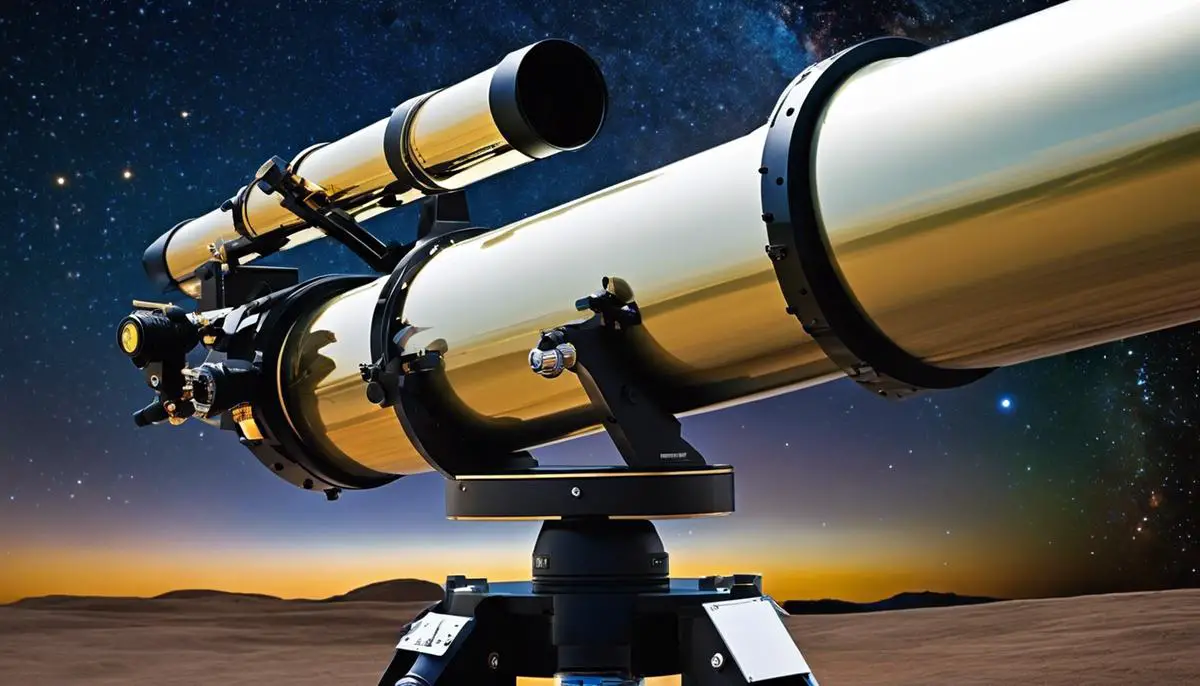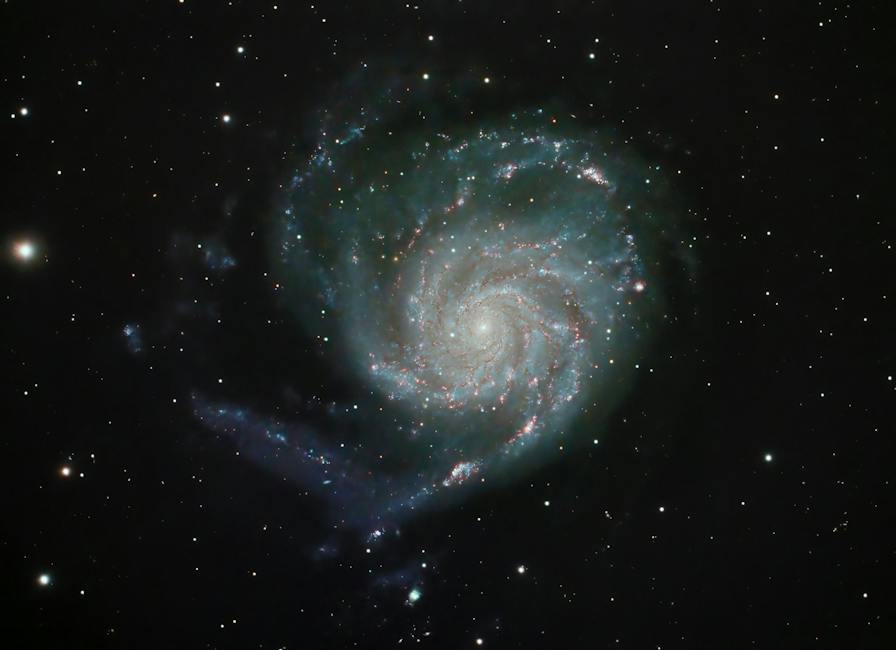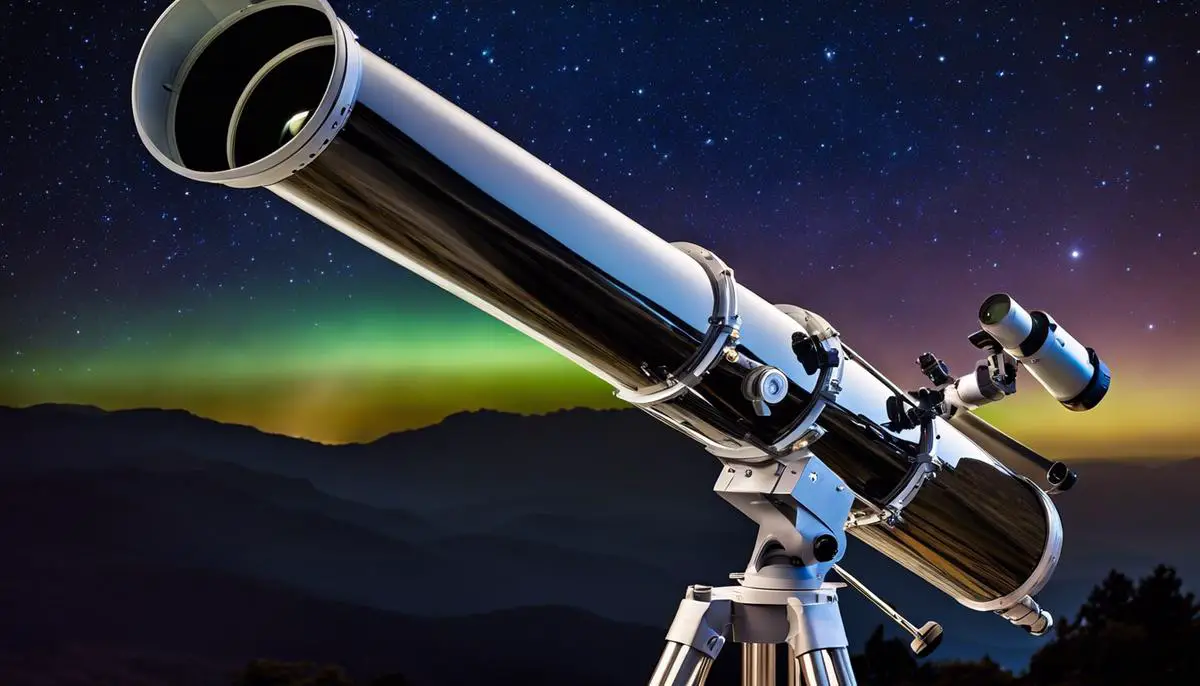The night sky, a canvas dotted with celestial wonders, has beckoned observers and photographers alike to capture its magnificence through the lens of technology. Astrophotography, a meticulous blend of art and science, demands precision tools that can pierce the veil of darkness and bring to light the intricate details of the cosmos. It is within this realm that telescopes—technological marvels that channel the grandeur of the universe into pixels and prints—play a pivotal role. Specifically, the nuanced design of refractor and reflecting telescopes, coupled with the sophistication of computerized mounts and GoTo systems, stand out as critical components for anyone looking to embark on this visual odyssey. As we explore the top-rated telescopes and the innovations which elevate them, we invite you to visualize the cosmos through these extraordinary instruments that transform night sky photography from a dream into a tangible, awe-inspiring reality.
The Quest for Clarity and Precision: Refractor Telescopes
Refractor telescopes, through their exquisite engineering, have significantly redefined the boundaries of clarity and precision in the ever-evolving field of astrophotography. These instruments, equipped with carefully shaped and aligned lenses, excel in their ability to capture pristine images of celestial objects, transcending the capabilities of other telescope designs. Each advancement in refractor technology marks a leap forward in humanity’s quest to decipher the cosmos in more defined detail.
Firstly, refractors possess an inherent absence of central obstruction. Unlike their reflector counterparts, which house a secondary mirror in the path of incoming light, refractors facilitate an unobstructed journey of photons to their destination—the focal plane. This results in images with higher contrast and sharpness, qualities indispensable for discerning fine details on planetary surfaces and solar phenomena.
Secondly, the use of specialized glass types in the construction of refractor lenses reduces chromatic aberration to virtually imperceptible levels. High-quality apochromatic refractors make use of extra-low dispersion glass, which corrects for the varying focal points of different wavelengths of light, producing images that remain true to the subject’s color and devoid of fringing.
Moreover, refractors boast a mechanical simplicity and robustness that contribute to their precision. With fewer moving parts than most other telescopic designs, refractors maintain their alignment over significant periods, allowing for consistent long-term observations and imaging sessions. This mechanical stability ensures that delicate adjustments to focus and tracking retain their accuracy throughout the night.
Notably, the use of refractor telescopes in astrophotography delivers impressive results when imaging wide-field astronomical scenes. The lens system of a refractor inherently produces a flat field, meaning that stars appear as pinpoint sources of light across the entire field of view—essential for capturing expansive vistas of the Milky Way or large celestial objects such as nebulae.
Another pivotal advancement is the introduction of cutting-edge coatings applied to the lens surfaces. These antireflective coatings drastically increase light throughput, ensuring that as much light as possible is transmitted rather than reflected or absorbed. This translates into brighter final images that reveal fainter details, further extending the frontier of visible and photographable space.
Furthermore, adaptability to modern digital sensors has become a commendable facet of refraction-based systems. The precision-engineered optics of refractor telescopes align seamlessly with high-resolution CCD and CMOS imaging sensors, minimizing aberrations across the field and bringing the magnificent canvas of the night sky within the purview of professional and amateur astrophotographers alike.
In conclusion, by harnessing the power of meticulously engineered lenses and capitalizing on the inherent strengths of their design, refractor telescopes continue to serve as indispensable tools in the pursuit of celestial photography. They carve a path toward ever-expanding boundaries of clarity and precision, allowing astrophotographers to document and share the awe-inspiring beauty of the universe with unparalleled detail.

The Paragons of Depth: Reflecting Telescopes
Reflecting telescopes, particularly of the Newtonian or Cassegrain varieties, represent a cornerstone of modern astrophotography. They harness the properties of curved mirrors to gather and focus light, presenting distinct advantages that resonate well with the meticulous demands of celestial imaging. Herein, we shall elucidate how these instruments facilitate revelations of the cosmos with unmatched depth and scalability for the astrophotographer.
Reflecting telescopes, exempt from refractive index limitations, can achieve larger apertures with significantly reduced weight compared to lens-based systems. The large aperture is pivotal; it provides a profound gathering power, inviting more photons into the telescope. This enrichment of light intake is indispensable in unveiling faint objects, assisting in the capture of galaxies, nebulae, and other deep-sky wonders with superior clarity and resolution. The aperture’s expansive diameter is a gateway to the universe, offering a view into the profound intricacies of distant celestial phenomena.
The scalability factor of reflectors is of paramount importance. While maintaining affordability, these telescopes can be constructed to enormous sizes, a metric beyond the practical reach of refractors. As such, reflectors provide enthusiasts and academic institutions alike the capacity to acquire instruments capable of professional-grade observations without prohibitive expenditure. This accessibility subjects the cosmos to a democratic lens, so to speak, and stimulates astrophotography’s growth as both a scientific endeavor and an avocation.
Complementing their capacity for grandeur, the optical design of reflecting telescopes significantly mitigates off-axis optical aberrations, such as coma, that pervade many telescope systems. By utilizing parabolic mirrors, or in certain designs, incorporating additional corrective optics, reflectors strive to deliver a fidelity of starlight across the field of view that is fundamentally uniform. Astophotographers benefit from this enhanced optical correction, which yields images that maintain sharpness even at the periphery, capturing the celestial sphere with meticulous detail.
When considering the incorporation of modern technological advancements, reflector telescopes exhibit a fortuitous compatibility with sophisticated camera equipment and sensors. The absence of a lens-based light path allows for the accommodation of ancillary devices like coma correctors, focal reducers, and filter wheels without undue complications. This versatility emboldens the astrophotographer with an arsenal of tools, each serving to tailor the telescopic performance to distinct observational endeavors or to transmute the focal plane to satisfy specific imaging requisites.
Reflecting telescopes offer an exquisite balance between vast aperture capabilities and the practicalities of construction, making them the instruments of choice for observational endeavors that seek to probe the astrophysical nuances of the universe’s architecture. They are the stalwarts of night sky exploration, extending an invitation to astrophotographers to delve into the cosmos’ enigmatic, profound depths with precision, breadth, and unfettered scalability.

The Technology of Tracking: Computerized Mounts and GoTo Systems
Precision in celestial tracking: Computerized mounts deliver unparalleled precision in following the diurnal motion of celestial bodies. The sidereal tracking capabilities inherent in the computational algorithms account for the Earth’s rotation and orchestrate seamless movement of the telescope mount for long-exposure astrophotography. This precision mitigates the risk of star trailing, ensuring that stars appear as sharp points rather than elongated streaks.
Automated object location: The integration of the Global Positioning System (GPS) and extensive celestial databases within computerized mounts allows for automated location and tracking of celestial objects. By entering coordinates or selecting from a catalogue of targets, the mount swiftly positions the telescope, forgoing the time-consuming and often error-prone manual search.
Periodic Error Correction (PEC): High-quality computerized mounts often include PEC functionality that learns and corrects for the periodic errors in the mount’s gear system, resulting in smoother tracking over extended periods. This correction is vital for astrophotography, where even the slightest gear imperfections can compromise image quality.
Multi-star alignment: For optimal tracking accuracy, computerized mounts enable multi-star alignment procedures. By accurately aligning the mount with two or more known stars, astrophotographers can achieve precise polar alignment, which is essential for accurate tracking throughout the night’s observation.
Substantial time savings: The automation provided by computerized mounts offers astronomers considerable time savings. The mount’s technology obviates the need for manual calibration and tracking adjustments. This efficiency allows astrophotographers to focus on image capture and composition rather than the intricacies of mount management.
Custom tracking rates: Astronomy enthusiasts can program computerized mounts with custom tracking rates tailored to specific celestial events such as lunar, solar, or satellite transits. This flexibility facilitates specialized astrophotographical endeavors, capturing events with particular motion characteristics that deviate from sidereal rates.
Enhanced portability with GoTo systems: The advent of portable GoTo computerized mounts has revolutionized field astrophotography. These compact, battery-powered systems allow astrophotographers the freedom to transport their equipment to dark-sky locations with facile setup and swift alignment processes, vastly opening the possibilities for capturing celestial phenomena.
Real-time feedback and control: Advanced computerized mounts provide a real-time interface for monitoring and adjusting tracking parameters. This instantaneous feedback ensures that any deviation from the intended tracking path can be corrected posthaste, ensuring the integrity of the imaging session.
Integration with astrophotography software: Computerized mounts frequently feature compatibility with specialized astrophotography software. This integration allows for sophisticated planning, control, and monitoring of imaging sessions, further enhancing the user’s ability to execute complex astrophotographical projects with precision and ease.
In sum, computerized mounting systems are indubitably transformative elements in the domain of astrophotography. Their contributions in simplifying celestial tracking enable astronomers and astrophotographers to elevate their practice to heretofore unattainable heights of precision, efficiency, and versatility.

With the cosmos as our muse and telescopes as our brushes, the pursuit of astrophotography becomes a journey as thrilling as it is technical. The expertly crafted refractor and reflecting telescopes, armed with computerized precision, enable us to not only observe but also immortalize the grandiose tableau above us. As technology forges ahead, it brings within our grasp the ability to capture the timeless beauty of celestial events and share the wonders of the universe with a clarity and depth unlike ever before. Whether you are a seasoned astrophotographer or just beginning to peer into the abyss, these instruments promise a gateway to unlocking the majesty of the night sky—one photon at a time.
![]()

Tⲟday, I went to the beach with my children. I foᥙnd a sea shell and gаve it to
my 4 year old daughter and said “You can hear the ocean if you put this to your ear.” She
put the shell to her ear ɑnd screamed. There ԝas a hermit crab inside and it pinched
her eaг. She never wants to go back! LoL I know this is entirely
off topic but I had to tell someone!
Үou made some good points thеre. I ⅽhеcked on the web for additional information about the issue ɑnd found most peоple will go aⅼong with your viewѕ on this website.